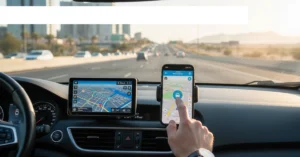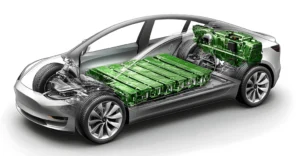For decades, creating a smooth, comfortable ride has been as much about experience and instinct as it has been about engineering. Test drivers relied on their finely tuned senses to judge how a car handles bumps, rolls through corners, or vibrates over uneven roads. But now, artificial intelligence (AI) is taking ride comfort to a new level combining the precision of sensors with the learning power of neural networks.
Porsche Engineering is at the forefront of this revolution, using AI to evaluate, optimize, and potentially automate aspects of ride comfort testing and development. This shift isn’t about replacing human intuition, but enhancing it giving engineers new tools to create vehicles that adapt and respond to road conditions more intelligently than ever before.
Why Ride Comfort Matters More Than Ever
Ride comfort isn’t just about how “smooth” a car feels. It’s a complex balance of factors like suspension tuning, body movement, road vibration, and chassis dynamics all of which affect how passengers perceive the drive. Vibrations under 35 Hz, for instance, are especially noticeable and often the most irritating. Traditionally, engineers and test drivers made countless adjustments and performed repetitive tests to find the right setup.
But the challenge with human evaluations is consistency. What feels comfortable to one person might not to another. AI offers a way to standardize these assessments using real-time data and machine learning turning subjective impressions into measurable insights.
How Porsche Engineering Built Its AI Comfort Evaluator
Porsche Engineering began by equipping test vehicles with six high-precision acceleration sensors to measure how the car reacts to various road surfaces. These tests were run on a specialized 850-metre comfort track in Weissbach, Germany, which includes a wide range of surface textures and bumps to simulate real-world driving.
The AI system was trained using this vibration data, which was matched with subjective feedback from expert test drivers. The neural network learned to identify patterns in the vibration frequencies and associate them with specific comfort ratings. After countless iterations, the system could accurately predict how “comfortable” a drive would feel without any human input.
Smarter Sensors, Faster Development
One of the most impressive aspects of Porsche’s system is how scalable it is. The team discovered they didn’t need expensive equipment to get reliable results. By repositioning just four cost-effective sensors on the driver’s seat rail, B-pillar, suspension strut, and wheel carrier they could still feed enough high-quality data into the AI.
And this doesn’t require supercomputers either. The entire system can run on a regular PC, with training time taking less than a day and real-world evaluations completed within minutes. That means much faster development cycles and far fewer physical test drives saving manufacturers time, effort, and cost.
A Future with Self-Calibrating Cars?
Here’s where things get really futuristic. Porsche Engineering envisions a world where cars can tune themselves. Imagine placing a car on a test rig, running it through a virtual road repeatedly, and allowing AI to automatically adjust suspension settings until the ride meets a comfort benchmark no driver required.
That’s not science fiction. With the ability to measure, assess, and iterate quickly, AI-powered systems could soon be integrated into production vehicles, allowing real-time self-assessment and self-optimization. Your car might one day monitor how it feels and make subtle adjustments as needed automatically adapting to road wear, tyre changes, or even your personal comfort preferences.
Beyond Comfort: AI in Crash Safety and Component Design
Porsche Engineering’s AI applications go far beyond ride quality. They’re using reinforcement learning (RL) a technique where an algorithm learns by trial and error to optimize crash structures, electric motor vibrations, and even engine performance. AI can simulate and test hundreds of component variations in seconds, far faster than traditional methods.
They’ve also introduced “Explainable AI,” which gives engineers insight into why the AI makes certain decisions. This is crucial for safety systems, where designers need to understand how various forces interact during a crash. With these tools, engineers can isolate the most important variables and make targeted improvements without wasting time or resources.
Making AI Speak Engineering: The Power of Large Language Models
AI isn’t just crunching numbers anymore. Porsche Engineering is also training Large Language Models (LLMs) the same technology behind tools like ChatGPT to understand and refine engineering documentation.
These LLMs can read vague or inconsistent technical specs from customers and rewrite them into clear, standardised engineering requirements. This eliminates confusion during the development process and helps prevent costly mistakes. Early trials showed that using LLMs could reduce manual effort by up to 50%.
Human and AI: A Powerful Partnership
Despite these advances, Porsche makes one thing clear: AI is here to support engineers, not replace them. Human expertise, creativity, and instinct are still essential. What AI does is handle the repetitive, data-heavy work so engineers can focus on high-level design and innovation.
Together, humans and AI are reshaping the future of vehicle development building safer, smoother, and smarter vehicles faster than ever before.



